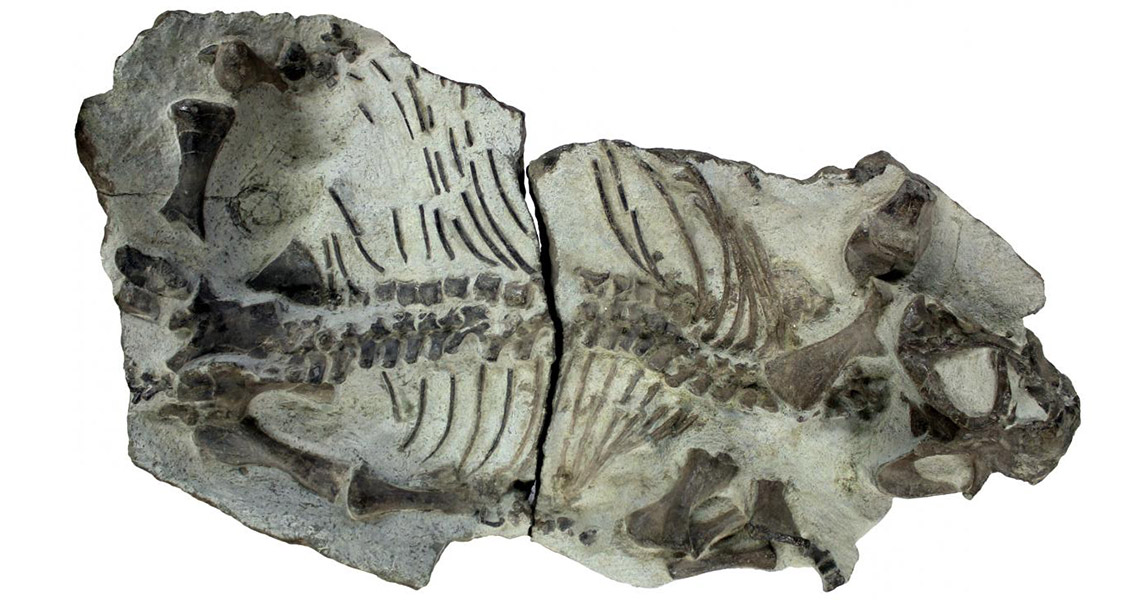<![CDATA[It's a question which is crucial to current life on earth. In the wake of mass extinction events millions of years ago, how did some creatures manage to survive? A new study, published in the Journal of Scientific Reports, has helped shed light on this fascinating question. The Permian-Triassic Mass Extinction Event which took place around 250 million years ago was by far the most devastating in our planet's history. Between 80% and 95% of all species were wiped out, including 53 percent of marine families, 84 percent of marine genera, and an estimated 70 percent of land species such as plants, insects and vertebrate animals. Exactly what caused the extinction, and even if it was a single event or several events spread over millions of years, is still debated by scientists. One popular school of thought is that a series of massive volcanic eruptions in the Siberian Traps kick started the mass extinction. The eruptions smothered huge swathes of land with lava and blasted tons of carbon into the atmosphere, drastically altering the earth's climate. Whatever caused it, the Permian-Triassic Mass Extinction event was devastating and yet some animals survived, even thrived, in the new climate. Now, a group of scientists think they know why. Paleontologists from the National Museum, Bloemfontein - a partner of the DST/NRF Centre of Excellence in Palaeosciences, seated at the University of the Witwatersrand in Johannesburg - and their collaborators looked at ancient mammal relatives known as therapsids to try and understand how they survived the mass extinction. Amazingly, their research shows that these ancestors to modern mammals survived by shortening their life expectancy. It is suggested by the team that the change saw the creatures take on a new pattern of live history, breeding at a younger age, perhaps even while still juveniles. "Before the Permo-Triassic extinction, the therapsid Lystrosaurus had a life span of about 15 years based on the record of growth preserved in their bones," explained lead author of the study, Jennifer Botha-Brink. "Yet, nearly all of the Lystrosaurus specimens we find from after the extinction are only 2¬-3 years old. This implies that they must have been breeding when they were juveniles themselves." The primary empirical evidence for their conclusion comes from analysis of Lystrosaurus' body size distributions and bone microstructure. Earlier breeding was inferred from analysis of survivorship models based on the team's observations of the creature. Therapsids were an order of Triassic and Permian period reptiles which are considered the predecessors to modern mammals. Lystrosaurus was a tusked, flat faced creature which first evolved around 270 million years ago. It was likely a burrower, and had powerful front legs. After the Mass Extinction Event, Lystrosaurus' average size fell from that of a hippo to that of a large dog, possibly as a result of the shortened life span. Ecological simulations run by the team suggest this change paid off however, increasing Lystrosaurus' chances of survival by 40% in the shifting post Extinction Event environment. The response of Lystrosaurus to the Permian-Triassic Mass Extinction Event is echoed in modern species. Human interference has triggered a similar change in Atlantic Cod: industrial scale fishing has removed large individuals from the population and reduced the average size. Remaining individuals are consequently forced to breed earlier in their life. With the world entering a new period of climate change, studying the endurance of creatures such as Lystrosaurus could prove pivotal in better understanding the impact of modern environmental shifts. "With the world currently facing its sixth mass extinction, paleontological research can help us understand how and why some animals, such as those like Lystrosaurus, thrived in the face of disaster," said Botha-Brink. Image courtesy of Wits University]]>
Therapsids Survived Mass Extinction With Shorter Life Expectancies
